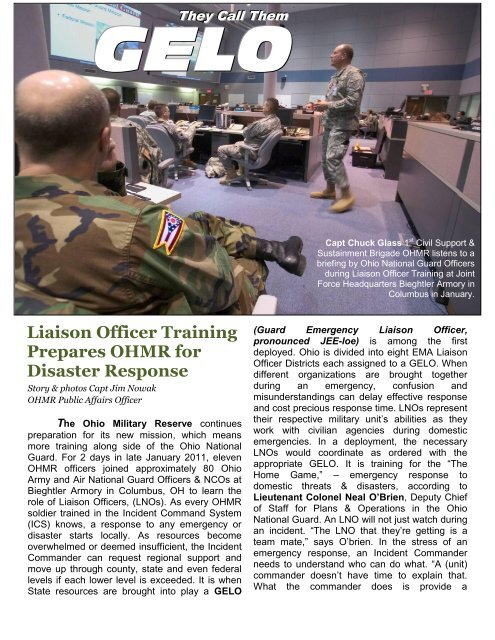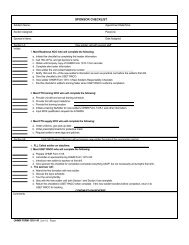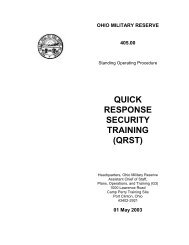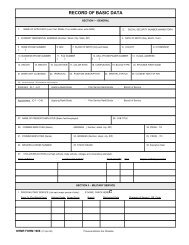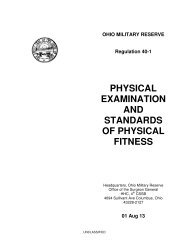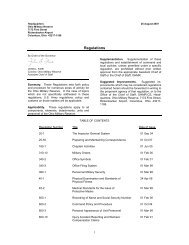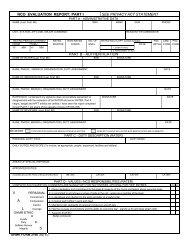Ohio's Own - Ohio Military Reserve - State of Ohio
Ohio's Own - Ohio Military Reserve - State of Ohio
Ohio's Own - Ohio Military Reserve - State of Ohio
- No tags were found...
You also want an ePaper? Increase the reach of your titles
YUMPU automatically turns print PDFs into web optimized ePapers that Google loves.
They Callll ThemGELOCapt Chuck Glass 1 st Civil Support &Sustainment Brigade OHMR listens to abriefing by <strong>Ohio</strong> National Guard Officersduring Liaison Officer Training at JointForce Headquarters Bieghtler Armory inColumbus in January.Liaison Officer TrainingPrepares OHMR forDisaster ResponseStory & photos Capt Jim NowakOHMR Public Affairs OfficerThe <strong>Ohio</strong> <strong>Military</strong> <strong>Reserve</strong> continuespreparation for its new mission, which meansmore training along side <strong>of</strong> the <strong>Ohio</strong> NationalGuard. For 2 days in late January 2011, elevenOHMR <strong>of</strong>ficers joined approximately 80 <strong>Ohio</strong>Army and Air National Guard Officers & NCOs atBieghtler Armory in Columbus, OH to learn therole <strong>of</strong> Liaison Officers, (LNOs). As every OHMRsoldier trained in the Incident Command System(ICS) knows, a response to any emergency ordisaster starts locally. As resources becomeoverwhelmed or deemed insufficient, the IncidentCommander can request regional support andmove up through county, state and even federallevels if each lower level is exceeded. It is when<strong>State</strong> resources are brought into play a GELO(Guard Emergency Liaison Officer,pronounced JEE-loe) is among the firstdeployed. <strong>Ohio</strong> is divided into eight EMA LiaisonOfficer Districts each assigned to a GELO. Whendifferent organizations are brought togetherduring an emergency, confusion andmisunderstandings can delay effective responseand cost precious response time. LNOs representtheir respective military unit’s abilities as theywork with civilian agencies during domesticemergencies. In a deployment, the necessaryLNOs would coordinate as ordered with theappropriate GELO. It is training for the “TheHome Game,” – emergency response todomestic threats & disasters, according toLieutenant Colonel Neal O’Brien, Deputy Chief<strong>of</strong> Staff for Plans & Operations in the <strong>Ohio</strong>National Guard. An LNO will not just watch duringan incident. “The LNO that they’re getting is ateam mate,” says O’brien. In the stress <strong>of</strong> anemergency response, an Incident Commanderneeds to understand who can do what. “A (unit)commander doesn’t have time to explain that.What the commander does is provide a


